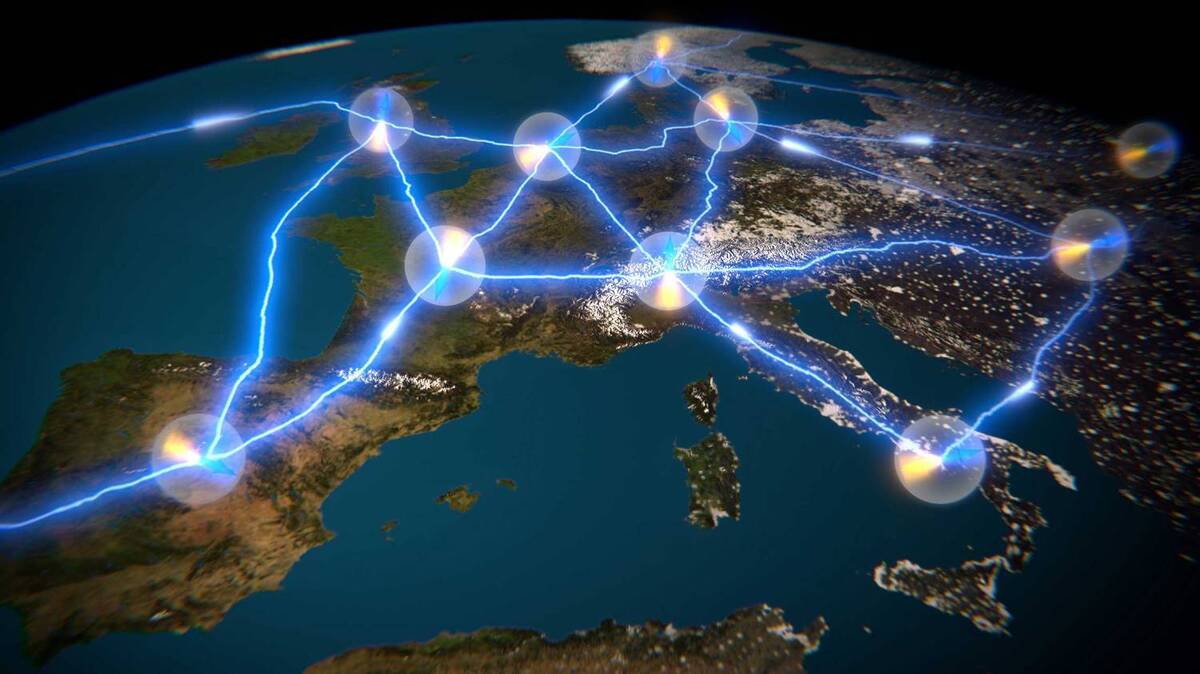Paranoid Experiment to Test Future Quantum Internet

Since quantum theory was first proposed over a century ago, it has swiftly gone from an attempt to understand the world around us to complex technological proposals that exploit its behavior. But, in the meantime, scientists are still trying to convince themselves that nature is in fact quantum, the journal Physical Review Letters reported.
It’s often said that the world’s most precise clocks (atomic clocks, which have enabled GPS technology) work thanks to quantum physics. The successful experiments in particle accelerators also rely heavily on this theory. However, some of the predictions of quantum theory are not that simple to test.
One of these is nonlocality, an effect by which observing one particle can reveal information about other particles potentially located thousands of kilometers away. Detecting this phenomenon is not straightforward, and the first convincing tests of nonlocality for two particles only came in 2015. Now, a group of scientists in China and Spain have carried out a very strict test of nonlocality in a network of particles.
Such a network could one day allow people in different cities to be connected by fast, hyper-secure communication channels and thus form the basis of a quantum internet. For the capabilities of the network to go beyond those of our current internet, it is essential that it can yield nonlocality. Thus, the results of this study, published in Physical Review Letters, could be used to certify equipment used to build a quantum internet.
“We have made one of the strongest, strictest tests of quantum phenomena in networks,” said Alejandro Pozas-Kerstjens, co-lead author of the paper and researcher at the Institute of Mathematical Sciences in Madrid.
To build a quantum internet connecting different cities, for example, one would need to place photon emitters in intermediate locations between every pair of cities so that they could distribute photons (the particles light is made of) to the cities they serve. The photons would need to be entangled in order to establish quantum links between the cities.
However, in a real-world scenario where one does not have full control over all of the emitters, one could imagine a faulty emitter sending non-entangled photons instead, making that link classical and compromising the functioning of the whole network.
Pozas-Kerstjens wondered whether there could be a way of certifying that all of the links in such a network were indeed quantum, i.e., that none of the emitters were taking shortcuts and sending non-entangled photons. He figured this would be an essential test for future networks to make sure they are working as they should.
That is why in 2022, he and two other colleagues coined the concept of “full network nonlocality”. For a setup to give rise to full network nonlocality, all of the emitters, or sources, need to distribute entangled photons. “If there exists a classical [i.e., non-quantum] source in your network, you can’t observe this anymore. If you have 500 sources and one distributes classical systems, then you can’t observe full network nonlocality,” Pozas-Kerstjens explained.
Shortly after their proposal came out, Xue-Mei Gu from the University of Science and Technology of China contacted Pozas-Kerstjens. “She told me by email, ‘We read your article, we have this implementation already set up and we’d like to observe your phenomenon. Do you think you could guide us?'” he recalled.
Pozas-Kerstjens knew that carrying out a convincing experiment would not be easy. The setup would need to be “paranoid [in order to] eliminate any chance that the results we observe can be simulated in a classical, or non-quantum, way,” he said. But he immediately accepted Gu’s offer.
The authors also asked the three groups of participants to represent how long they thought each video was with hand gestures rather than verbally. While adults and school-age children predominantly used horizontal hand gestures, pre-kindergarteners seemed to have no such preference.
The authors suggest that this preference for thinking about timelines as horizontal could also have to do with the awareness in older children and adults that time is absolute and that events are arranged into the past, present and future along a line.
When we think of traversing through life, we imagine walking from the past, into the future. This could be part of the reason why, for instance, we talk of “leaving the past behind” or of the “future ahead of us”. Because pre-kindergarteners do not yet understand the concept of absolute time, they represent magnitudes of time as “big” or “small” either using vertical or horizontal hand gestures.
The authors also call for further research to understand how these heuristics arise in the brain, how they change with age, and how conditions like Alzheimer’s disease could potentially affect them. Ultimately, the study of time perception offers a fascinating insight into how our brains construct our experience of the world.
4155/v





















